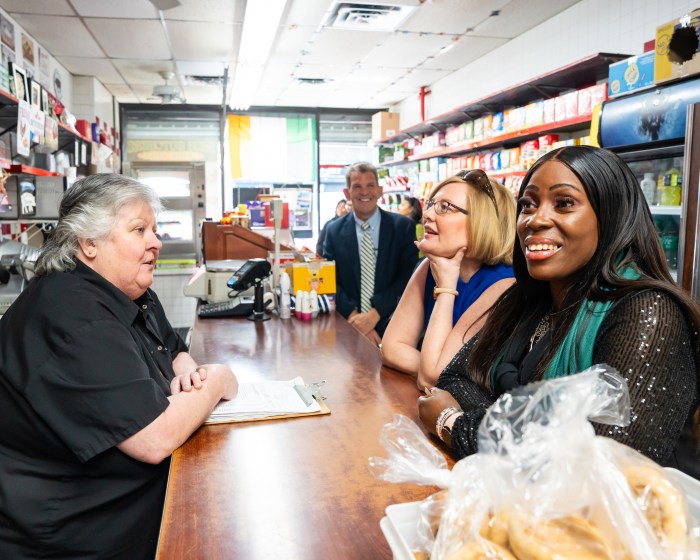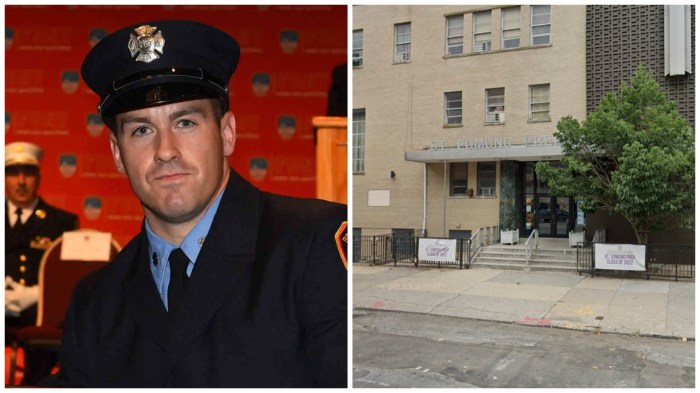
October might be decorative gourd season to some, but for Italian-Americans it’s time to debate Christopher Columbus.
Was he a clueless and genocidal accidental traveler? Heroic explorer and symbol of the faith? Be sure to pick a side before the Columbus Day Parade steps off on Fifth Avenue this Monday. This year, however, the usual back and forth has a particular urgency given the nationwide conversation about historical monuments, which has manifested itself in New York largely around the explorer’s statue in Columbus Circle.
Trying to strike a balance
To complicate matters, this year’s grand marshal is not the usual ballplayer, church leader or brash politician, but Len Riggio, chairman of Barnes & Noble. The parade theme is “A Celebration of Italian-American Authors,” and the organizers reached out to such writers with the tantalizing offers of Barnes & Noble-backed advertising and promotion.
This has led to soul-searchings, crises of conscience and email debates. Over at the Italian American Writers Association, for example, board member Nicholas Matros wrote an impassioned note to his peers that accepting the invitation — their first official one to be in the parade — would be “an awful lot like selling one’s soul.”
“We’re in this melting pot,” he said by phone this week, describing the new understanding of Columbus’ impact on the people he found in America. Matros, 37, weighs that downside with the fact that Italian immigrants to America “really had nothing to do with a wealthy navigator from Genoa who was being paid by Spain.”
There’s plenty to celebrate in Italian-American culture; why not make it the Italian-American Day Parade in the same vein as the Puerto Rican Day Parade, Matros asks. As a teacher, he appreciates the three-day weekend that comes with the day but “it’s embarrassing to me knowing what we know about him now, that we celebrate.”
This line of thinking fits well with the IAWA ethos, where Matros says authors these days focus on a “much more global understanding of the immigrant experience, and we are a part of that.”
“Every year, this conversation comes up,” says Joseph Sciorra, a director of the John D. Calandra Italian American Institute at Queens College. There was the group, Italian-Americans for a Multicultural United States, formed decades ago in response to the 500-year anniversary of Columbus’ voyage. Other cities such as Los Angeles have changed the names of their Columbus Day parades to honor indigenous peoples.
This year the issue has been “much more heightened,” Sciorra says, with the statue conversation fueling the flames. He declined an invitation to join the parade, calling Columbus “a vilified historical figure.”
Sign of the times
Such figures are now up for consideration by a commission launched over the summer by Mayor Bill de Blasio in the wake of Confederate statue controversy. The commission, which was greeted by outcry from various Italian-American politicians and the right, is supposed to have its first meeting next week, but has not made any public announcements about statues. De Blasio has refused to be pinned down on the Columbus statue, but he says he plans to march on Monday.
He will be joined by Annie Rachele Lanzillotto, 54, a writer and IAWA affiliate from Yonkers. Lanzillotto says she thinks New York City will eventually follow suit with other cities’ moves to rename the parade, but for now she thinks it’s most useful to make a stand rather than boycotting, providing a positive image of progressive Italian-Americanism. As opposed to the typical stereotypes of thick Mafioso and “Kiss me, I’m Italian” T-shirts, she says she’ll carry a sign saying, “Read me, I’m Italian.”
Citing the example of the gay Irish activist Brendan Fay, who eventually opened the St. Patrick’s Day Parade in New York to LGBTQ marchers, she says she wanted to bring her own gay, working-class, radical presence to the often traditional and stodgy march.
But she was clear-eyed about the challenges. There are Italian-Americans who don’t want to hear criticism of Columbus. To many of them and New Yorkers in general, Columbus Circle is a fundamental part of the city scenery. It could be a long haul before the perennial parade debates lead to any changes.
“It’s like we’re going to have to de-core the apple,” she says.

















